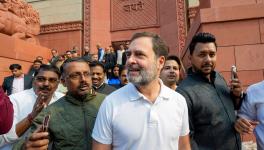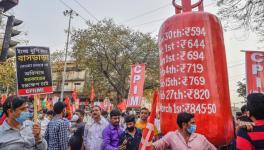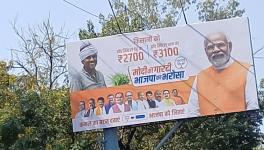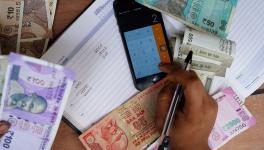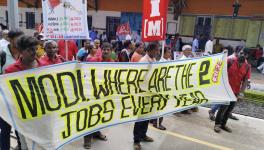Home, Auto Loan EMIs to Rise as RBI Hikes Repo Rate by 40 bps; CRR up 50 bps
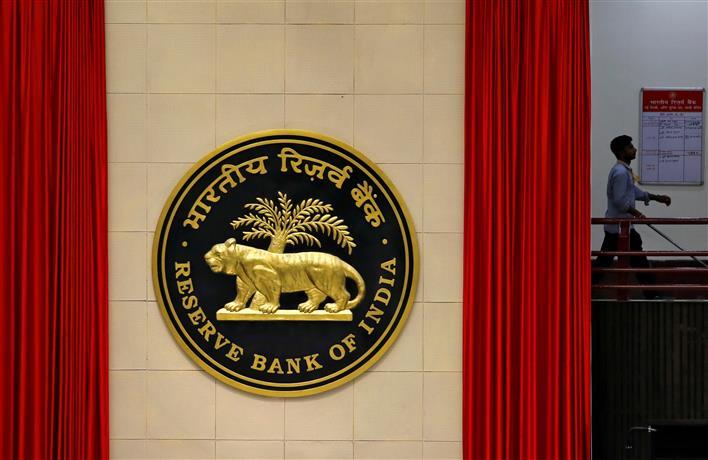
Image Courtesy: Reuters
Mumbai: Home, auto and other loan EMIs (equated monthly instalments) are likely to increase after the Reserve Bank of India (RBI) hiked its key interest rate by 40 bps (basis points) in a surprise move on Wednesday in an effort to tame inflation that has remained stubbornly above target in recent months.
The increase in repo rate - the rate at which RBI lends to commercial banks - to 4.40% from a record low of 4% is the first since August 2018 as well as the first instance of the RBI Governor-headed monetary policy committee (MPC) holding an unscheduled meeting for raising interest rates.
The RBI also hike the cash reserve ratio (CRR) by 50 basis points to 4.5%, which will now require banks to park more money with the central bank and leave them with less to loan to consumers.
This would drain Rs 87,000 crore of liquidity from the banking system, RBI Governor Shaktikanta Das said in a video address announcing the rate hike decision.
He, however, did not mention anything about the reverse repo rate and hence it remains the same at 3.35%.
The standing deposit facility rate is now at 4.15% while the marginal standing facility rate and bank rate stand at 4.65%.
The MPC retained its accommodative monetary policy stance - meaning it can cut interest rates to support growth - at a time when globally inflation is rising alarmingly.
Persistent inflation pressures are becoming more acute, particularly on food, Das said, adding that there is a risk if prices stay at this level for "too long" and expectations become unanchored.
"Inflation must be tamed in order to keep the Indian economy resolute on its course to sustained and inclusive growth," he said.
Increases in fuel and food prices, exacerbated by the war in Ukraine and sustained pandemic-related supply chain disruptions, have been above the RBI comfort zone of 2-6% for three months in a row. Headline inflation in March rose to a 17-month high of 6.95% and it may be above the target band in April too.
The MPC is scheduled to meet on June 8 and analysts expect it to again raise the repo rate by at least 25 bps.
"The MPC judged that the inflation outlook warrants an appropriate and timely response through resolute and calibrated steps to ensure that second-round effects of supply-side shocks on the economy are contained and long-term inflation expectations are kept firmly anchored," Das said.
The governor, however, added that the monetary stance remains accommodative and actions will remain calibrated.
"In the MPC's view, monetary policy response at this juncture would help to preserve macro-financial stability amidst increasing volatility in financial markets," he added.
The move surprised markets, pushing Benchmark Sensex down by 1,474 points in the intra-day trade and sending the yield on India's benchmark 10-year bond to 7.38%.
One basis point is one-hundredth of a percentage point.
The RBI has cut the repo rate by 250 basis points since February 2019 to help revive the growth momentum. The Monetary Policy Committee has been on a prolonged accommodative stance to support growth.
In its response to the pandemic, monetary policy had shifted gears to an ultra-accommodative mode, with a 75 bps reduction in the policy repo rate on March 27, 2020, followed by another reduction of 40 bps on May 22, 2020.
In April, it raised its inflation forecast to 5.7 per cent for the current fiscal (2022-23), up from 4.5 per cent, and said it sees gross domestic product (GDP) growth during the year at 7.2 per cent compared to a previous expectation of 7.8 per cent.
From October 1, 2019, all banks were mandated to lend only at an interest rate linked to an external benchmark, such as the RBI's report rate or Treasury bills yield. As a result, monetary policy transmission by banks has gained traction.
For two years, the RBI kept interest rates at a record low to support the economy.
The six-member MPC had last held an off-policy cycle meeting on May 22, 2020, to perk up demand by cutting the repo rate by 40 basis points to a historic low of 4 per cent in wake of uncertainty surrounding the Covid-19 pandemic.
The rate hike comes after 11 consecutive times, the last being just a month back, of the RBI holding interest rate at a record low of 4%.
Get the latest reports & analysis with people's perspective on Protests, movements & deep analytical videos, discussions of the current affairs in your Telegram app. Subscribe to NewsClick's Telegram channel & get Real-Time updates on stories, as they get published on our website.










